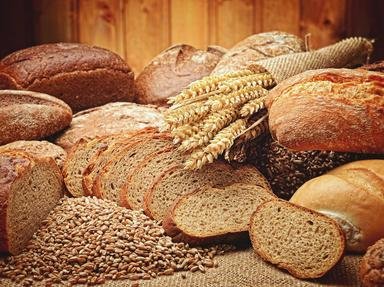Quiz Answer Key and Fun Facts
1. While the exact origin of the bagel is shrouded in the past, which of the following countries is least likely to have made the first bagel within its borders?
2. The word bagel is thought to have its etymological roots in the Yiddish word "beygl" which means what?
3. Medieval anti-Semitic European laws prohibited Jews from selling bread, however, which option did Poland provide to allow the sale of bagels?
4. Which ingredient is LEAST likely to be used to make a New York-style bagel?
5. Which of the following contributes the most to creating the yummy, doughy, chewy, texture inside a New York-style bagel?
6. Often bagel lovers will add a schmear to their bagel. What in the world is a schmear?
7. What is one of the benefits of a bagel having a hole in the middle?
8. Which of the following Italian cheeses has become popular to bake into a bagel?
9. What is something unique about a traditional Montreal-style bagel?
10. What gives sourdough bagels their distinctive flavor?
11. Which of the following types of bagels would be the best to bring as a gift for an eastern European with a new home?
12. Which of the following would NOT be used in a gluten-free bagel recipe?
13. Which dough ingredient step can be done differently to make a more fluffy and tender bagel?
Source: Author
BigTriviaDawg
This quiz was reviewed by FunTrivia editor
Bruyere before going online.
Any errors found in FunTrivia content are routinely corrected through our feedback system.

